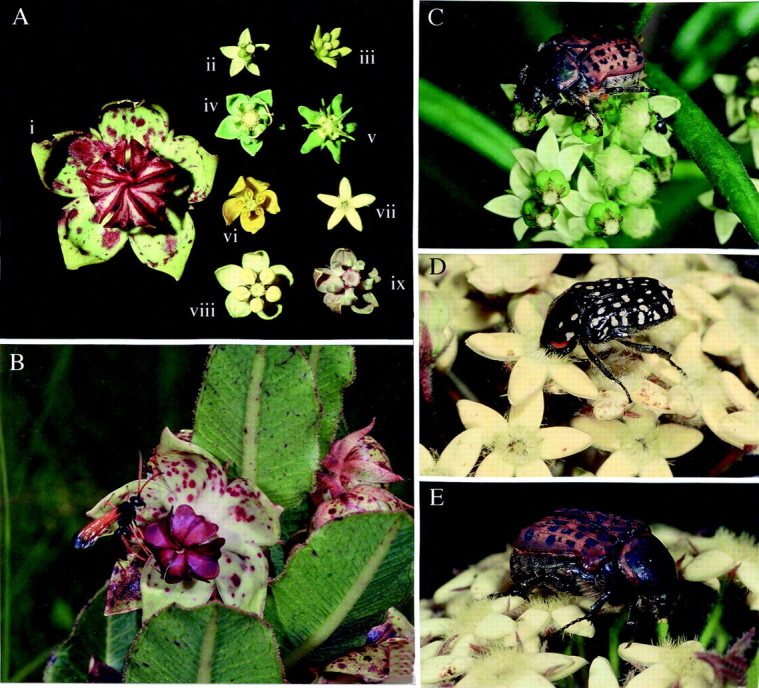
Fig. 1. A, The nine species of asclepiad included within this study: (i) Pachycarpus natalensis; (ii) Xysmalobium involucratum Decne; (iii) xysmalobium gerrardii Scott Elliott; (iv) Miraglossum verticillare (Schltr.) Kupicha; (v) Miraglossum pilosum (Schltr.) Kupicha; (vi) Aspidonepsis diploglossa (Turcz.) A. Nicholas; (vii) Sisyranthus trichostomus (Harv.) K. Schum. and D.J. Goyder; (viii) Asclepias woodii (Schltr.) Schltr.; (ix) Asclepias cucullata (Schltr.) Schltr. B, Hemipepsis hilaris (Hymenoptera: Pompilidae) visiting a flower of Pachycarpus natalensis. C, Atrichelaphinis tigrina (Coleoptera: Scarabaeidae: Cetoniini) visiting flowers of Xysmalobium involucratum; note the yellow pollinaria attached to the legs. D, Cyrtothyrea marginalis (Coleoptera: Scarabaeidae: Cetoniini) visiting Sisyranthus trichostomus and feeding through the hairs within the floral tube. E, Atrichelaphinis tigrina visiting Sisyranthus trichostomus; note the pollinaria attached to the mouthparts.
